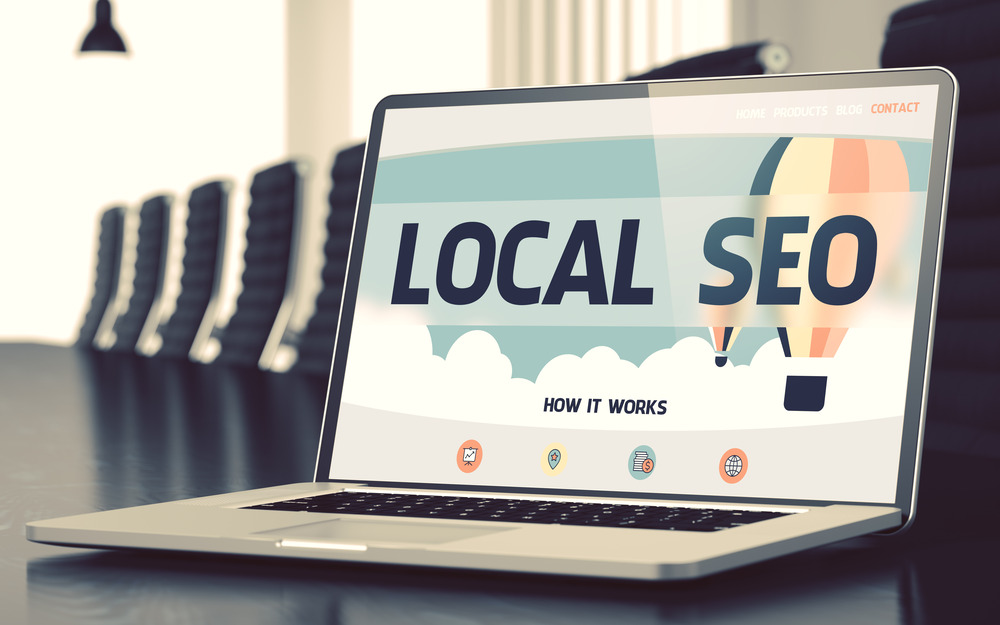
We would not be surprised to learn that a good portion of the new customers we encounter learn about Webtek Digital Marketing by searching for a phrase like ‘digital marketing near me’. In fact, we plan for it. We expect local companies to search for digital marketing and locale SEO partners also located in the same general vicinity.
Think about your business. Do the bulk of your customers live and work in the same area? Are you targeting mostly people who do business within 50 miles of your location? Even if your company extends service 100 miles beyond your local office, the chances are pretty good that most of your customers live locally. You need to reach them based on the one thing you share in common: your city, town, or county.
‘Near Me’ is a Winning Keyword
When we talk about ‘near me’ as a keyword for SEO purposes, what we are really referring to is a local SEO principal. Local SEO is a subset of traditional SEO that focuses on reaching a local audience using specialized strategies. Is it worthwhile? How about we let some recent statistics answer that question:
- ‘Near me’ searches have increased 500% in recent years.
- Approximately 1.5 billion ‘near me’ searches are conducted every month.
- The majority of those searches (84%) are conducted on smartphones.
- Searches for local businesses account for 46% of all Google searches.
We have one more statistic that could be the most important of all: 28% of all ‘near me’ searches ultimately lead to a purchase. Given the fact that the average return rate on a solid marketing campaign is about 6%, a 28% success rate for ‘near me’ searches is more than impressive. It proves that the phrase is a winning keyword for local audiences.
How to Utilize It Effectively
The title of this post implies that we are going to explain how you can reach customers searching for local businesses near them. That’s exactly what we intend to do. The remainder of this post will concentrate on local SEO tactics proven to reach customers intent on purchasing goods or services from nearby businesses.
1. Establish a Google Business Profile
The first and most important thing you should do is establish a Google Business profile. Google is the world’s most dominant search engine bar none. They offer every business the opportunity to set up a free business profile with no strings attached. Why would you not do it? There is no sense in ignoring such a great tool.
Google benefits from these profiles by having more accurate information they can utilize for ranking purposes. Your company benefits by giving Google some of the information it needs to match your website with appropriate local searches. Again, why would you not create a Google Business profile?
2. Promote Your NAP Data
In order for Google and other search engines to properly rank your site for local searches, they need accurate name, address, and phone number (NAP) data. Give them that data in your business profiles. But don’t stop there. Promote your NAP data wherever you can.
Get it listed in local business directories. Make sure it is accurate across every profile of your business you find online. Contact directory owners whenever NAP information needs to be corrected. And then promote the data on your own website. Do not make it impossible for customers to find your physical location, for example. If you rely on phone calls to attract new business, make sure your number is featured prominently across your site.
3. Connect Your Content to Local References
Search engines definitely look at your NAP data for the purposes of ranking local search results. But they need more than just your company name, address, and phone. Give it to them by connecting your content to local references.
What do we mean by that? We understand that a lot of customers find us by searching for digital marketing ‘near me’. To us, ‘near me’ refers to Salt Lake City and the surrounding area. We also have a sister office in Austin, TX. So to promote both offices, we create content that features local references to both Salt Lake City and Austin.
We also create content with references to Utah and Texas. Why focus on just two cities when we can extend our reach to their respective states as well? Ask yourself that same question. Including local references in your content helps search engines more closely associate your business with ‘near me’ searches.
4. Make Sure Local References Are Relevant
We also highly recommend making sure that any and all local references in your content are relevant to your business. Here at Webtek, we specialize in things like digital marketing, SEO, and web development. We do not repair computers. Therefore, any references to local computer repair are irrelevant to what we do. There is no point in discussing a Salt Lake City computer repair business in our own content.
Remember that Google puts a high value on relevance. Google engineers are constantly improving algorithms to be able to recognize relevance between titles, keywords, and content body – all for the purposes of improving their rankings. That means all your content needs to be relevant to both your business and what your customers want.
5. Optimize Your Website for Mobile
One of the most important aspects of local SEO is also one that is often ignored: optimizing your website for mobile. Let us go back to the statistic that demonstrates 84% of all ‘near me’ searches are conducted on mobile devices. If your site is not mobile friendly, it is not going to rank well on mobile searches. As a side note, Google has designed it that way.
Customers find us by searching digital marketing ‘near me’. Could they find your business by searching for a similar phrase? If so, you need to start leveraging ‘near me’ as a way to drive traffic to your site. Ignoring it is to throw away a powerful marketing tool.




